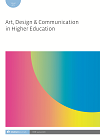
Full text loading...

Of all academic fields of study, few encounter as much difficulty with issues of assessment than the fine arts. Yet despite calls for greater transparency and accountability at the post-secondary level, the majority of relevant research and literature focuses on primary and secondary school instruction; post-secondary instructors are essentially abandoned to wrestle with the apparently irreconcilable goals of quantifiable measures of assessment, on the one hand, and the chaotic nature of the creative process, on the other. Given the above, the goal of the present research is to add to the understanding of the pedagogy of post-secondary studio instruction by examining how instructors go about the problematic exercise of assessing their students. Findings indicated a strong sense of confusion amongst participants and a need for teaching institutions to invest more in instructor training and support in order to increase dialogue amongst faculty and the dissemination of best practices.

Article metrics loading...

Full text loading...
References


Publication Date:
https://doi.org/10.1386/adch_00077_1 Published content will be available immediately after check-out or when it is released in case of a pre-order. Please make sure to be logged in to see all available purchase options.